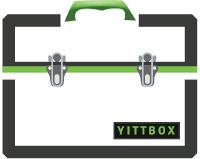Database Load Balancing In A Multi-Cloud Environment
Multi-cloud environments assist with severe technical problems. They ensure that if your cloud crashes, you can simply switch to another cloud and continue working. Your operations are not hampered in any way using these environments.
Multi-Cloud environments also allow higher productivity in managing tasks. Adopting a multi-cloud setup can also help make a virtual infrastructure successful. Its recovery and backup features protect sensitive company applications and data.
Load Balancers are the primary tools to sustain a multi-cloud environment. Database developer companies design this software that assists companies in distributing their work over various cloud setups.
How are load balancers designed for a multi-cloud environment?
Database developer company design load balancers. These companies design load balancers according to your data clusters. Data clusters can have a single writer as well as multiple writers.
Clusters with a single writer have just one node, called the master. However, clusters with multiple writers have several masters, such as the Galera Cluster. Tools like MySQL, Postgres-BDR, or MySQL Group Replication use this process.
The crucial detail that must be taken care of is the high availability. Cloud clusters need the support of a secure network. If it faces a loss of network, it may interrupt your operational flow as well as your productivity.
Multi-writer load balancing clusters
Multi-writer clusters are easier to design and manage. The database is smartly loaded to handle conflicts by itself. A web database development company ensures that the software is loaded correctly and can send traffic to the available nodes.
Multi-writer clusters are based on quorums. They can partition networks automatically. The main focus should be on the accessibility of the load balancers. You can achieve this by leveraging load balancing options.
Tools like Cloud Load Balancing as well as Elastic Load Balancing are great platforms for load balancing. These are scalable and highly available. However, these do not support databases. It is ideal for adding scripts to enable its functioning. Scripts locate the right node for data transfer.
Single-writer load balancing set up
Single-writer setups are complex, and also challenging to design. The key challenge is to track the writer so that the writer reaches an accurate destination. Database developer companies develop these in many ways.
One of the tried and tested ways is using DNS. DNS stores the name of the host that connects to the writer. Load balancers require programming to send their writes to the right address.
Various service discovery tools help in load balancing. These tools store data and recognize the correct node for data sharing. Load balancers then use this to move the writes to the right address. This improves the efficiency as well as scalability.
Business benefits of multi-cloud environment load balancing
Multi-cloud load balancing allows agility in operation. A Data analysis software company uses this as an opportunity to capitalize on the rising demand for efficient IT systems.
Features like fast scaling ensure that companies can manage surges in traffic. This helps the smooth functioning of systems without any drop in performance. Multi-cloud applications are also more reliable and steady.
Finally, the main benefit of multi-cloud load balancing is the efficiency of risk management. Load balancing allows a lot of innovation to develop new software as well as helps make the process simpler.
Summing up
Multi-cloud environments are efficient and make the functioning of systems easy. However, creating load balancing software is not simple, even for database developer companies. Developers face a lot of challenges while designing the tools for load balancing.
Even though load balancing might not have a concrete design, it is a quick and reliable way of protecting valuable data and also distributing it to different systems for backup. Multi-cloud load balancing is indeed earning a steady place in the IT systems of companies.







